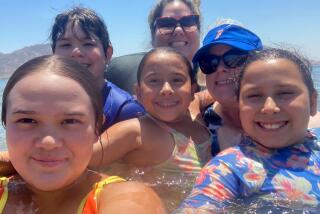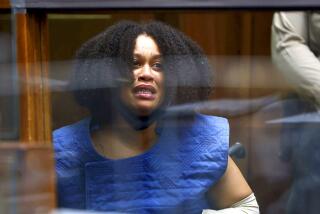Reflecting on a Tragedy and Lessons Still Unlearned
It has been just over a year since an Anaheim teenager crashed his father’s Chevrolet Suburban in the Mojave Desert and killed four of his friends. The accident raised all-too-familiar questions about drunk driving, designated drivers and sales of alcohol to those younger than 21. But it is clear from the experiences of those touched by the tragedy that after all that has been done to combat teenage drinking, many still have lessons to learn.
Of the eight in the Suburban, four survived, including the driver, James Patterson. He pleaded guilty to four counts of vehicular manslaughter and two counts of felony drunk driving. Because of his age, he was sentenced to only 120 days in jail and 120 days of alcohol abuse counseling. He was lucky; had he been older, his sentence undoubtedly would have been longer.
Another of the crash survivors, now 18, insisted in an interview for an article in the Los Angeles Times Magazine that the deaths resulted from “a freak accident.” Asked if he had learned a lesson from the deaths, he said no.
The answer is unfortunate. There are any number of things to be learned from the accident. The reply underlines the need for more education of the perils of drinking and driving, especially by the young.
Patterson was supposed to have been the “designated driver,” the one person in a group who can be counted on to avoid alcohol and get behind the wheel after the party. The concept of designated driver is good, but its validity depends on the person bearing the responsibility.
One survivor said Patterson must have been sober; he had slept for five hours before starting to drive the group home. That answer shows an unfamiliarity with how long it takes for alcohol’s effects to vanish. When Patterson was tested after the crash, he had a blood-alcohol reading of .16%, twice the legal limit for adults.
The deaths have devastated Patterson, his family and the families of those killed. Most of the victims’ parents blame the driver. He has expressed regret and said he wants the parents of those who were killed to know he feels a great weight of responsibility. But the tragedy has been compounded in one family, with the father of a victim proclaiming hatred for Patterson and the dead youth’s sister forgiving and supporting the driver.
Some have raised the valid question of how much responsibility is to be borne by parents who allowed teenagers to drink beer in their homes. Some parents believe that because teenagers will drink alcohol, it is better that they do it at home, learning the effects under parental supervision. But what happened to these youngsters makes it dramatically apparent that parents too easily can be lulled into a false sense of security even when such supposed safeguards as designated drivers and adult supervision are in place.
The investigation showed that Patterson took some beer from home and his group bought more at an Anaheim store. A store clerk was acquitted of selling alcohol to minors. But purchases of alcohol by those under the legal age are frequent enough to warrant police crackdowns and prosecution. This month, Santa Ana police said they would put undercover officers in liquor stores to catch underage youths with false identifications and others willing to buy alcohol for minors. That is a good decision.
Mothers Against Drunk Driving and other groups have done a good job in recent years in reducing society’s former tolerance for those who drove while drunk. But the desert tragedy involving the Orange County teenagers shows that the campaign cannot be over. Teenagers--and their parents--need to realize the consequences of drunk driving and try to prevent it.
More to Read
Sign up for Essential California
The most important California stories and recommendations in your inbox every morning.
You may occasionally receive promotional content from the Los Angeles Times.









